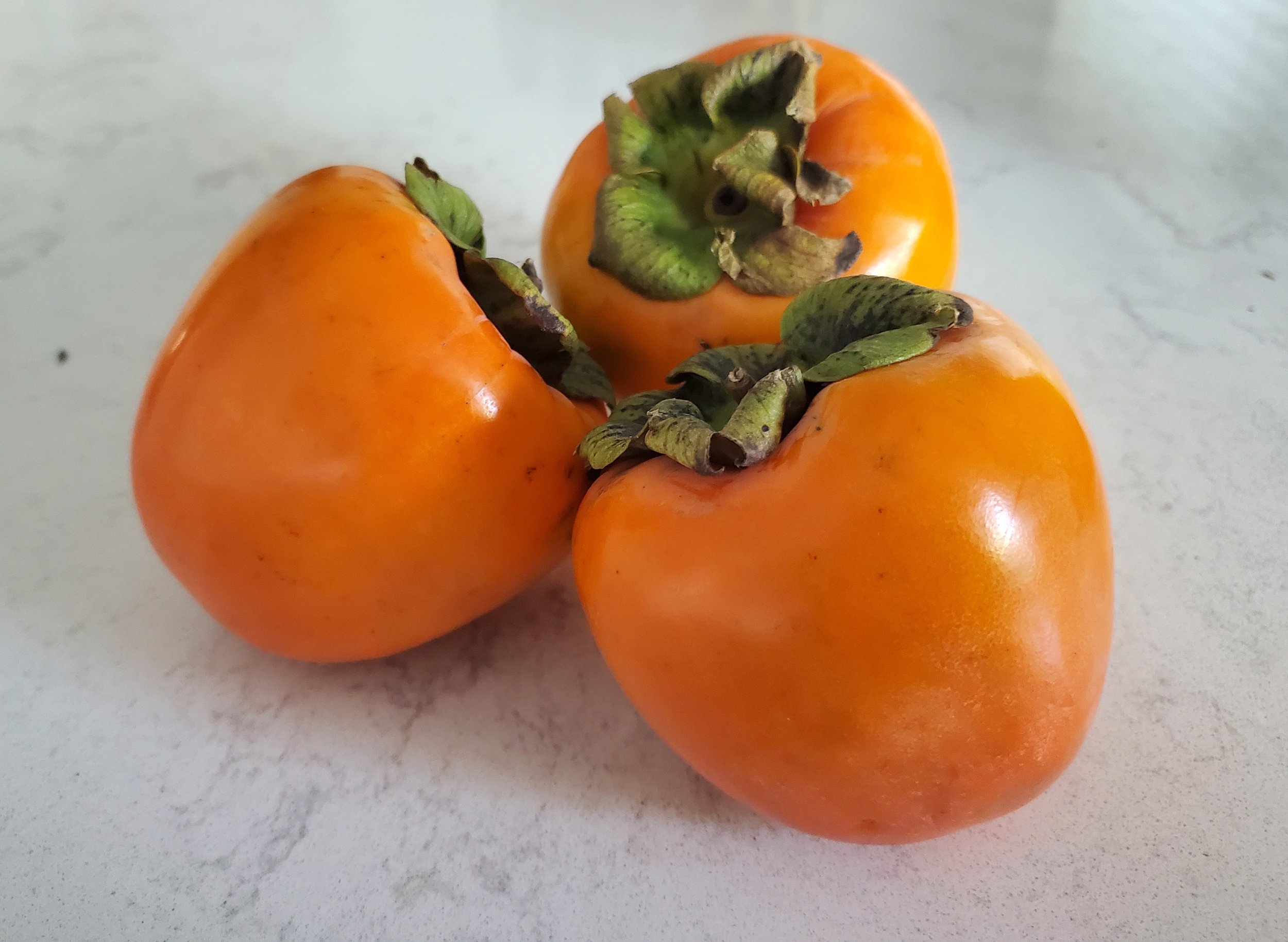FUYU AND HACHIYA PERSIMMONS EAT DIFFERENTLY
Have you ever tried a persimmon and thought you didn’t like it? Hachiyas and Fuyus are the two main commercial varieties of persimmons in the United States and are eaten very differently. Hachiyas are tapered and shaped like an acorn. If you accidentally tried a piece of Hachiya before it was completely jelly soft, the astringency and bitterness would leave a fuzzy taste in your mouth. Hachiyas need to be fully ripened until they are almost translucent and EXTREMELY soft. If you think any part of the fruit is still firm, you need to wait. Cut a ripe Hachiya in half and scoop out the delicious fruit or use the pulp in cakes, cookies and muffins.
Hachiya Persimmons
Fuyu’s are short, squat and non-astringent and when ripe they have a sweet flavor with a hint of cinnamon and apricot. You can eat them raw when they are firm or soft and they do not need to be peeled. Fuyu’s can be eaten like an apple, cut up and eaten on their own or great in a salad. You may sometimes find a few seeds inside but they are easy to eat around. Try making a Fuyu persimmon salad with cumin-lime vinaigrette or James Beard's persimmon bread with Hachiya persimmons.
Fuyu Persimmons
The harvest usually starts around the end of September and goes through December. It can extend into January if there is no winter freeze. California grows almost 100% of the persimmon crop in the United States followed by Florida, Texas, Hawaii, Louisiana, Mississippi, Alabama and Missouri. In California over half of the persimmons are grown in Tulare and Fresno counties. The other main areas are Orange, Riverside and San Diego counties and a very small amount are grown in Sutter and Placer counties north of Sacramento.
Persimmons unlike many fruits will keep longer if left at room temperature. Once they are in the refrigerator they will go soft faster and will need to be eaten quickly. Look for persimmons with smooth skin and no bruising. Persimmons are an excellent source of Vitamin A, C and fiber and full of antioxidants.
Cool fact: The light colored, fine-grained wood from a persimmon tree is used to make billiard cues, drumsticks, golf clubs and furniture.
If you have never tried a persimmon this is the year to be adventurous and pick one up at the store. Try these easy recipes.


